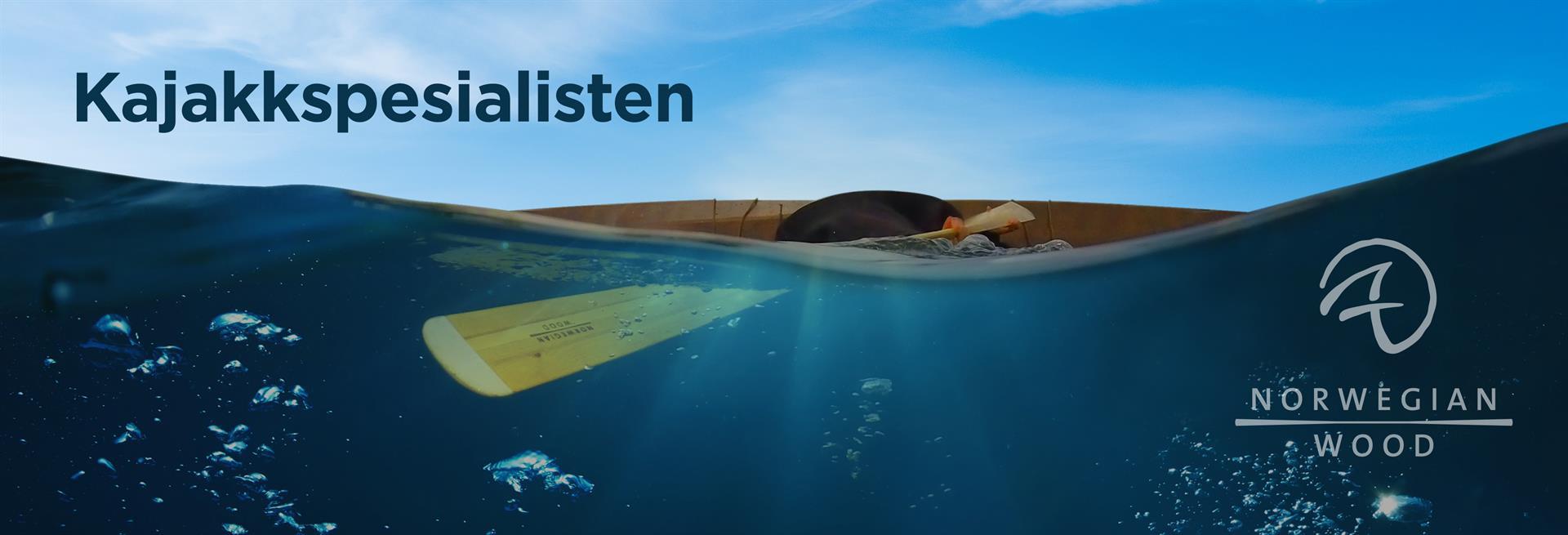Basic maneuvering
Here we will present the most basic strokes for maneuvering your kayak which also means that you can controll the kayak i varoius conditions. A Greenland kayak is mostly maneuvered with trimming (placing weight), strokes and by using edging and leaning the kayak.
360 turn
We begin with a 360 degrees turn. The technique is easy to learn and extremely useful. The principles in this maneuver apply to many strokes, so if this maneuver is done correctly and you understand how it works you will have a basic knowledge of many strokes. The 360 maneuver is a basically a combination of a forward stroke and a backward stroke, combined with edging the kayak. You make a forward stroke on one side and a backward stroke on the other. When getting more eksperienced the forward and backward strokes are changed into a forward- and a backward sweepstroke. Combined with edging the kayak you will be able to turn your kayak quite easily and fast.
Begin by placing the paddle in the water far in front of you and make a forward stroke. Then, on the opposite side, place the paddle in the water behind you and do a backward stroke. Repeat with one to two strokes alternating on each side until you have turned the kayak all the way around itself, back to the beginning position. You will notice the kayak has a lot of resistance in the water. That is where the edging comes in. To make the job easier, edge the kayak when you make a stroke. For this to work properly you need to have a good connection with your hips and thighs so it reacts properly when lean/edge the kayak. You edge the kayak towards the same side you place the paddle in the water. Twist the paddle slightly to not lose your balance. The paddle moves more flatly on the water and then provides more support. Hold it about 45 degrees on the water. The stroke will be somewhat less efficient this way, but in return, you may lean even further to the side, making the manoeuvre a lot easier. Make sure you keep the paddle as horizontal as you can. Place the hand not being in the water all the way down to the kayak deck. This will give more buoyancy and even more chance of leaning further to the side. To challenge and improve your skills you can time yourself and try to do it as fast as possible. Two kayaks facing each other can also have a "duel" on whom will return to the beginning the fastest after a 360 turn, or do it with your eyes closed.
The forward stroke has begun. Note how the bow is out of the water because of the tilting.
The stroke ends a little behind the upper body and you change side.
The backward stroke has begun on the opposite side. Place the paddle in the water waaaaay bak. Note the low paddle.
The stroke ends a little in front of the upper body, change side and begin a new forward stroke.
A useful variation of this exercise is to use an asymmetrical grip. As mentioned earlier, the Greenland paddle invites you to change the grip and use the paddle creatively. You get extra support and more power in the stroke if you grip it asymmetrically. With some practise you will find it falls naturally to change grip as needed and thus use a long paddle alternate from one side to the other. In the picture below the paddle is held asymmetrically on a backwards steering stroke.
Asymmetrical grip on the paddle.
When in waves a useful tip is to time the steering stroke to the wave patterns, so you do your most powerful steering stroke when the kayak is on top of a wave. Parts of the kayak is then out of the water and you will have less resistance when turning, making it much easier to turn the kayak around.





